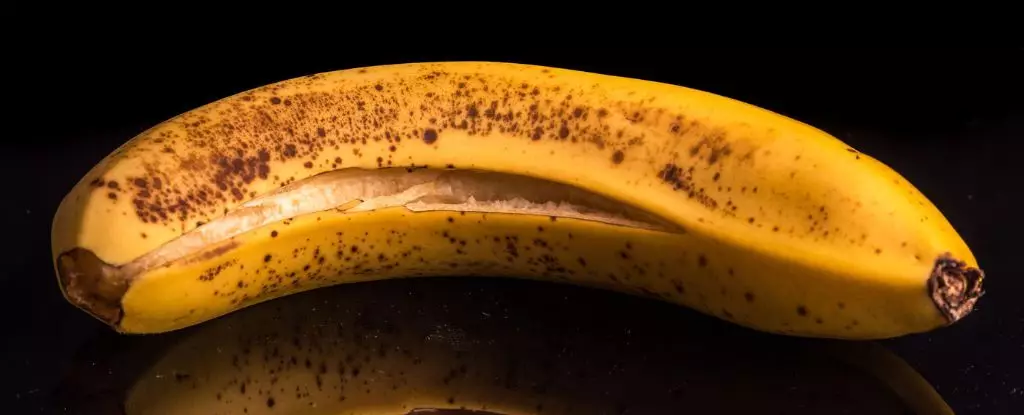Every time we mindlessly toss a banana peel into the trash, we are discarding not just waste, but a culinary opportunity that many of us have never even considered. The 2022 study revealing the potential of banana peels as a flour alternative is an eye-opener, challenging our traditional views on food consumption and waste. Those who haven’t ventured beyond conventional cooking techniques often overlook this valuable byproduct, trapped in a world of culinary ignorance, while the rest of the food industry continues its unsustainable practices.
This wasted opportunity is both frustrating and enlightening. Imagine a world where we could derive taste and health benefits from every piece of fruit, including the parts we usually neglect. This isn’t just about banana peels; it’s a broader commentary on how our food culture dismisses the possibility of utilizing what seems ‘undesirable.’ The culinary sphere needs to evolve and redefine what we classify as edible, moving towards a more sustainable practice of cooking.
A Flavorful Transformation: The Power of Preparation
The notion that banana peels can be creatively prepared and incorporated into our diets is revolutionary. When blanched, dried, and ground, banana peels morph into a versatile flour that can elevate baked goods to new heights. Contrary to preconceived notions, the unearthed taste test results indicate that consumers aren’t just tolerating peel-enhanced sugar cookies; they are genuinely enjoying them. This juxtaposition highlights the disturbing trend of food elitism where only elements deemed ‘worthy’ are utilized in our kitchens.
Those who cling to culinary traditions face a risk of becoming obsolete. The food ecosystem is evolving, and it is essential to move with it. The findings suggest that by experimenting with healthy alternatives like banana peel flour in a variety of baked goods—from cookies to breads and cakes—we can create something exciting and novel. Too often, we stick to what is familiar out of fear of the unknown, and this study proves that stepping outside those boundaries can result in delicious and nutritious outcomes. The only real downside seems to be an unattractive appearance when overused; a small price to pay for expanding our culinary horizons.
The Hidden Health Benefits: Antioxidants and Nutrients
Not only do banana peels have the power to redefine our understanding of flavor, but they also pack a real punch when it comes to nutritional content. Enriching baked goods with minerals like magnesium and potassium, alongside antioxidants that’ve become buzzwords in health circles, could contribute to an overall healthier diet. It’s fascinating to think that something so often discarded can elevate our nutrient intake while also providing an avenue to reduce food waste. In an era where sustainability is crucial, this is not just a culinary trend; it’s a movement.
To put it bluntly, we are in a climate crisis, exacerbated by food waste. One astounding statistic reveals that a whopping 40% of a banana’s weight comes from its peel, predominantly rejected by consumers without a second thought. Not only could utilizing banana peels lead to delicious creations, but it poses an impactful solution to an environmental dilemma.
Embracing Innovation in the Kitchen
The creativity surrounding banana peels won’t end with baked goods. Culinary innovators like Nigella Lawson have already introduced banana peels into diverse recipes such as curries, and vegan enthusiasts are turning them into tantalizing ‘bacon.’ This kind of innovation must be celebrated as a shift towards a more conscious approach to cooking. In a world that glorifies extravagance and wastefulness, basking in the merits of banana peels demonstrates the beauty of innovative thinking.
Furthermore, when we consider the potential of other fruit peels—like mango, which enhances the nutritional profile of cakes—we are compelled to rethink our entire approach to edible flora. The idea that simple preparations can unlock flavors and nutrients hidden within the skins of our favorite fruits sets the stage for a culinary renaissance grounded in sustainability and taste.
Embracing banana peel flour isn’t just about health and nutrition; it’s about cultivating a cultural shift away from waste. The kitchen can and should be a place of creativity, exploration, and transformation. By taking the leap into this unfamiliar territory, we empower ourselves to reduce waste and celebrate culinary diversity, truly revolutionizing how we perceive food.


Leave a Reply